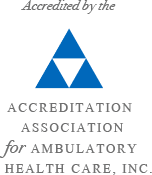How Common are Esophageal Strictures?
 Swallowing is an action that your body usually performs easily and without you giving it much thought. If you have an esophageal stricture, however, you may have difficulty swallowing and feel like food is getting stuck in the base of your throat or in your chest. You may also feel a fullness or pressure in your chest.
Swallowing is an action that your body usually performs easily and without you giving it much thought. If you have an esophageal stricture, however, you may have difficulty swallowing and feel like food is getting stuck in the base of your throat or in your chest. You may also feel a fullness or pressure in your chest.
In this blog, the gastroenterologists at Gramercy Park Digestive Disease Center (GPDDC) explain more about esophageal strictures, including how common they are and how they’re treated.
What are esophageal strictures?
An esophageal stricture is an abnormal narrowing of the esophagus, a tube-like structure that connects your throat to the stomach. This condition is fairly common and can occur at any age, although it’s most common after age 40.
When everything works as it should, the esophagus allows food, drink, and saliva to smoothly move from your mouth to your stomach. It also prevents foods or liquids from backing up from your stomach into your esophagus or mouth.
If you have an esophageal stricture, however, the process is made more difficult. You may have trouble swallowing and moving food or drink downward into your stomach.
What causes these strictures?
Strictures can be caused by a variety of issues, including the following:
- Gastroesophageal reflux disease (GERD) – the most common cause of esophageal stricture. When acid backs up into your esophagus, it can damage cells and lead to the formation of scar tissue that narrows the esophagus.
- Radiation treatment – for treatment of cancer of the head, neck, or chest
- Swallowing harmful chemicals or objects
- Eosinophilic esophagitis – a chronic allergic/immune condition that causes the esophagus to become inflamed
- Esophageal cancer
How are esophageal strictures diagnosed?
Strictures can be diagnosed in several ways, including the following:
- Barium swallow – You’ll be asked to swallow a solution that contains barium, and your doctor will take an X-ray to view how the barium travels down your esophagus. If it gets stuck or slows down along the way, this indicates the presence of a stricture.
- Endoscopy – An endoscope is a narrow, lighted tube with a tiny camera on the end. Your doctor can insert an endoscope into your esophagus to look for the presence of a stricture.
How are strictures treated?
Strictures are most often treated by esophageal dilation. This procedure is used to widen the esophageal passageway by stretching the opening. Your doctor may use long plastic or rubber cylinders of different sizes to open the stricture, or a balloon dilator may also be inflated to accomplish the same thing.
You may be asked to take a proton pump inhibitor (acid-blocking medication) before and after your dilation if your stricture is caused by GERD.
If esophageal cancer is causing your stricture, surgery, chemotherapy, or radiation may be needed.
If you’re having difficulty swallowing, make an appointment today with Gramercy Park Digestive Disease Center. We specialize in gastroenterology services such as the treatment of esophageal strictures through endoscopic procedures.


